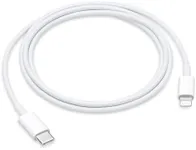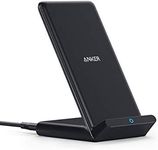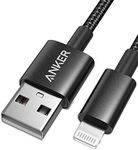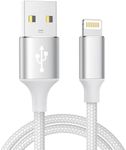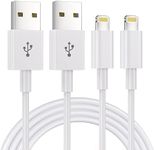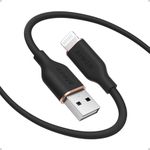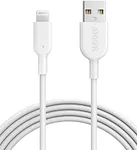Buying Guide for the Best Iphone Chargers
Choosing the right iPhone charger is essential to ensure your device charges efficiently and safely. With various options available, it's important to understand the key specifications and how they impact your charging experience. This guide will help you navigate through the important features to consider when selecting an iPhone charger that best fits your needs.WattageWattage refers to the power output of the charger, measured in watts (W). This spec is important because it determines how quickly your iPhone will charge. Chargers typically range from 5W to 30W or more. Lower wattage chargers (5W-12W) are slower and suitable for overnight charging or less frequent use. Mid-range wattage chargers (18W-20W) offer faster charging and are ideal for daily use. High wattage chargers (25W-30W+) provide the fastest charging speeds and are great for those who need to quickly top up their battery. Consider your charging habits and how quickly you need your phone to charge when choosing the wattage.
Connector TypeThe connector type refers to the type of plug that connects to your iPhone. The most common types are USB-A to Lightning and USB-C to Lightning. USB-A to Lightning is the traditional option and is compatible with many older charging bricks and accessories. USB-C to Lightning is the newer standard and supports faster charging speeds when paired with a compatible power adapter. If you have a newer iPhone model and want faster charging, opt for a USB-C to Lightning charger. If you have older accessories or don't need fast charging, a USB-A to Lightning charger will suffice.
Cable LengthCable length refers to the length of the charging cable, typically measured in feet or meters. This spec is important for convenience and flexibility. Shorter cables (1-3 feet) are great for use with power banks or when charging close to an outlet. Medium-length cables (3-6 feet) offer a balance of convenience and portability, suitable for most everyday situations. Longer cables (6-10 feet) provide more flexibility and are ideal for use in larger spaces or when the outlet is far from where you need to charge. Consider where and how you typically charge your iPhone to determine the best cable length for you.
Build QualityBuild quality refers to the durability and construction of the charger and cable. This spec is important because a well-built charger will last longer and be more reliable. Look for chargers with reinforced connectors, braided cables, and high-quality materials. These features help prevent fraying, breaking, and other common issues. If you frequently travel or use your charger on the go, investing in a charger with good build quality is essential. For home use, build quality is still important, but you may not need the same level of durability as for travel.
Safety FeaturesSafety features refer to the built-in protections that prevent damage to your iPhone and charger. This spec is important to ensure safe and reliable charging. Common safety features include over-voltage protection, over-current protection, short-circuit protection, and temperature control. These features help prevent overheating, overcharging, and other potential hazards. When choosing a charger, look for one that includes these safety features to protect your device and ensure safe charging. If you often leave your phone charging unattended, prioritizing safety features is especially important.
